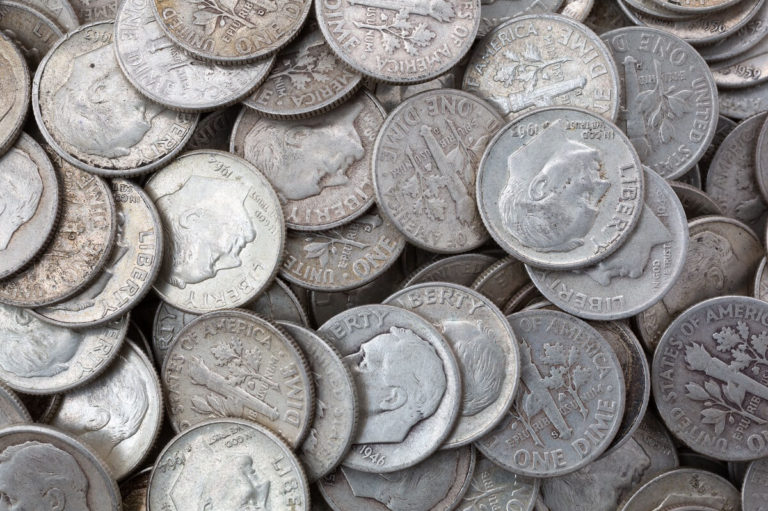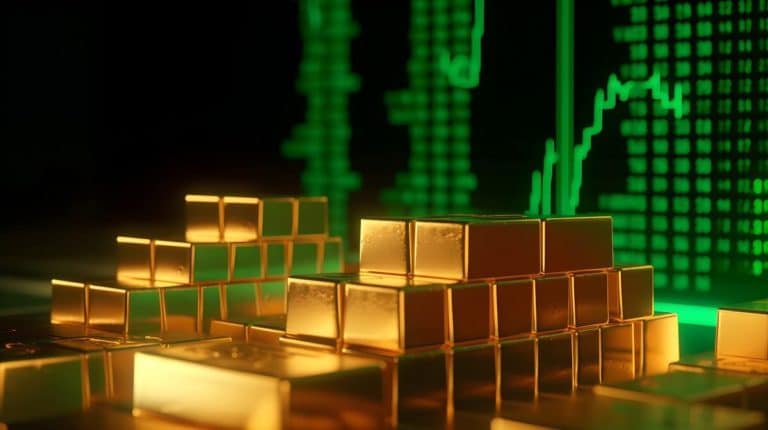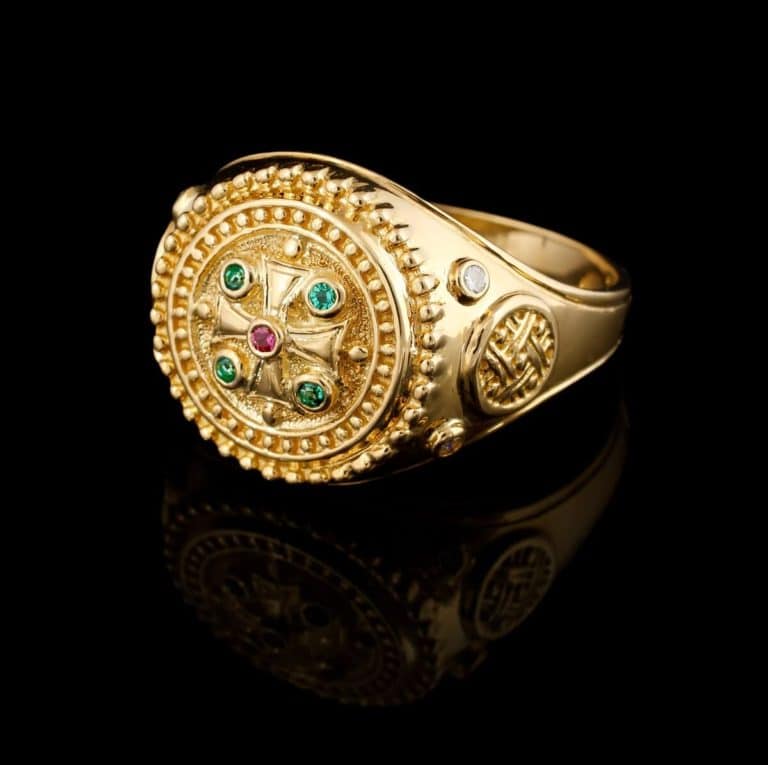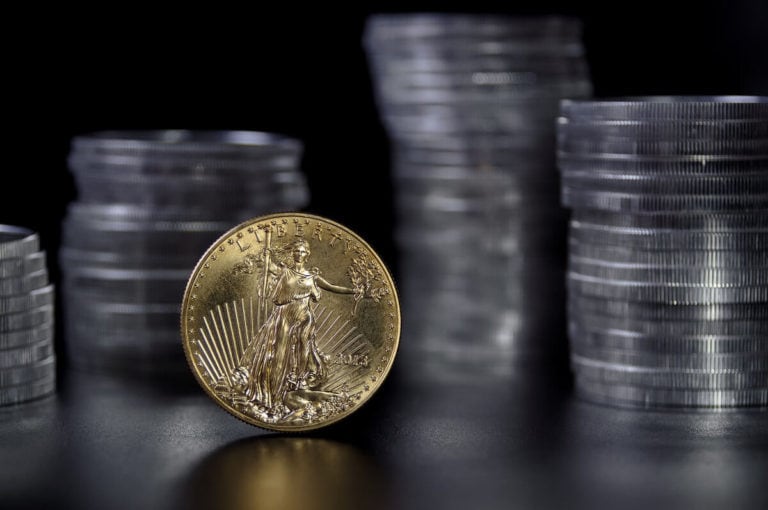- Our content is independently written and reviewed by trusted reviewers & fact-checkers.
- Your information is never sold. We can earn money by connecting you with top Gold IRA Companies. Learn how our reviews work.
- Want to learn more? Meet our authors and explore our editorial policy.

Investing and trading in precious metals like gold and silver is not a new invention. In fact, these were one of the first commodities people exchanged and traded. To this day, investing in metals is one of the most reliable and inflation-resistant strategies, making gold or silver an interesting investment opportunity.
While gold remains one of the most expensive commodities on the market, silver is much more approachable in terms of prices. Additionally, there’s a steady interest in silver, which is used in industries such as jewelry, photography, and electronics industries.
For these reasons, many investors turn to silver when exploring different investment products. And that leads us to the topic of silver futures.
What are silver futures, and how to trade them? You’ll find all the answers in our comprehensive guide.
Table of Contents
Let’s Talk About the Theory – What Are Silver Futures?
Silver futures are exchange-traded contracts in which a seller and a buyer come to an agreement about the price of silver that will be delivered at a specified time in the future. What this means is that a buyer and a seller can establish a price that will be beneficial to both for a delivery of silver that is delayed in time, usually months into the future.
What is the purpose of silver futures? The shortest explanation is that they offer a form of protection for the buyers and sellers against fluctuations in the prices of the metal.
Picture this. A buyer knows they are going to need 500 ounces of silver in six months’ time. Currently, the price of silver is set at $20 per ounce. But they don’t know how much the same amount of metal will cost by the time they are ready to accommodate the delivery of silver.
So, they purchase a contract that offers them the opportunity to buy silver at $20 per ounce for a product that will get to them in six months, when they’ll need it.
Such a contract brings some significant advantages for a seller too, offering them a chance to secure themselves against drops in the price of silver in the future. Of course, every coin has two sides. It may turn out that silver costs $22 per ounce in six months’ time, which means the seller will face a loss of $2 per ounce.
Every silver futures contract has its expiration date, upon which the transfer of silver or cash settlement takes place.
Establishing a set price for a future transaction that offers protection for the seller and buyer is called hedging. But there are other strategies in futures trading, such as speculation and arbitrage, that are sometimes implemented by investors (although the elements of both are seen in hedging as well).
While speculation is based on investing in time-bound long or short positions in silver futures to generate profit from price fluctuations, arbitrage is focused primarily on small price movements in a short-term perspective.
Silver futures offer a certain amount of liquidity in investments. Still, it’s important to realize these contracts introduce some risks. In most cases, investing in silver futures is not recommended when you’re at the beginning of your journey as an investor. It’s beneficial to gain experience and understand the level of risks you wish to face when investing before you enter the silver futures market.
How To Trade Silver Futures
That’s how silver futures trading looks in theory, but let’s uncover the reality of trading for most investors. A good starting place would be to talk about where silver futures trading takes place.
There are multiple exchanging platforms that accommodate these contracts, the most prominent one being CME Group’s COMEX Exchange.
This is a good trading place for investors who are prepared to make substantial purchases, as well as those who are planning to invest smaller amounts of money. And it’s all thanks to three different variants of investments COMEX offers their clients.
These variants are categorized by how many troy ounces of silver you’re willing to purchase. A full silver contract equals 5,000 troy ounces, but you can decide to invest in an E-mini silver futures contract that amounts to half that, which is 2,500 troy ounces. There’s also a Micro contract that includes 1,000 troy ounces of silver in it.
- Full – 5,000 troy ounces
- E-mini – 2,500 troy ounces
- Micro – 1,000 troy ounces
The full price of a contract is simple to calculate. It’s the price of one ounce of silver multiplied by 5,000, 2,5000, or 1,000 ounces. What’s crucial, each contract is backed up by physical, refined silver bars, which are stamped and serialized by a refiner approved by the exchange.
Additionally, traders can trade on leverage, which means they are allowed to take a position that equals to multiply their available capital. However, to do that, they need to maintain a specified margin.
Settlement Process
Most investors resolve their silver futures contracts through cash settlement. This means that instead of getting their silver delivered, they opt to receive the associated cash position, which is how they profit.
You can find the details regarding COMEX silver settlement processes here.
Those who hold their positions until a contract expires are obligated to receive or deliver a COMEX silver warrant for a full-size silver futures contract, entitling the silver owner to hold the ownership over equivalent bars of silver in the designated depositories (this is obligatory).
In the case of two other contracts (E-mini and Micro), the Accumulated Certificate of Exchange (ACE) is either received or deposited, entitling a new owner to 50% or 20% of a standard full-size silver warrant.
It is possible for an owner to accumulate ACEs from these smaller contracts in order to gain ownership over a full-size silver warrant over time.
Advantages of Trading Silver Futures
What are the biggest advantages of investing in silver futures?
- These contracts allow sellers and buyers to mitigate risks associated with silver price movements.
- Investing in silver futures can offer protection against inflation, especially in the long-term perspective.
- There is a considerable level of liquidity in these contracts.
- Buyers can better plan their purchases and meet the demand for this precious metal with strategic planning regarding the delivery of silver.
- Investors have the opportunity to short-sell their silver.
Risks Associated with Silver Futures
As mentioned earlier in this article, there are some risks associated with silver futures trading, and it’s good to be aware of them before making any purchases. Some of these risks include:
- Silver sellers risk selling the metal for lower prices than the future market price, exposing themselves to the risk of generating losses.
- Price fluctuations during the period of trade can also cause an investor to lose a part of their investment.
- There is a risk of default that is associated with this type of investment.

Why Invest in Silver Futures?
Any type of investment bears some risks; however, silver futures are considered to be one of the best investments to make in times of turmoil and high inflation, like we see today. Of course, this type of investing is primarily based on speculation, and while it offers favorable terms for sellers and investors, it exposes them to facing financial losses, too.
Those interested in hedging will find silver futures a safer option, allowing them to mitigate some risks that come with price fluctuations. Still, due to the fact silver futures can be invested in based on leverage, it exposes individuals to substantial financial losses, and for this reason, trading silver futures is recommended to experienced traders who have a good idea of their desired risk profile.
Investing in Silver Futures FAQs
Can I get physical silver if I purchase silver futures?
Yes, you can receive physical silver bars when investing in silver futures. One warrant entitles the buyer to ownership of equivalent bars of silver in designated depositories, which may include HSBC Holdings, Brink’s Company, Delaware Depository, and others.
How to buy silver futures?
You can buy silver futures when trading on one of the exchange platforms. Exchange platforms like COMEX are available for trading within the US, as well as some international exchanges, like London Metal Exchange (LME) or the Tokyo Commodity Exchange (TOCOM).
Is it safe to trade in silver metal?
Like most investments, trading in silver can introduce some risks. However, investing in precious metals like silver or gold is, generally speaking, considered a relatively safe investment. It is safe to invest in silver when it is done via official, trusted exchange platforms, so it’s always crucial to do a background check on one before you start trading.
Is silver expected to go up or down?
In a short-term perspective, silver can and often does fluctuate in price. However, the demand for this metal is continuous, and with the growth of industries that produce solar power systems, and electronics, it’s predicted to increase in upcoming years. This may lead to an increase in the price of silver, making it an interesting investment product.
Article Sources
At Gold IRA Blueprint, we dive deep into the world of gold IRAs, using trusted sources to back up our insights. Our sources range from official documents to expert interviews, ensuring our content is both accurate and reliable. We also draw on research from reputable publishers to give you the most comprehensive understanding possible. Check out our editorial policy to see how we maintain our high standards for accuracy and fairness. Also make sure to check out our Financial Review Process to have a better understanding of our process.
- CME Group. “Silver Futures Contract Specs.” https://www.cmegroup.com/markets/metals/precious/silver.contractSpecs.html
- CME Group. “E-mini Silver Futures Contract Specs”
https://www.cmegroup.com/markets/metals/precious/e-mini-silver.contractSpecs.html - CME Group. “Micro Silver Futures Contract Specs” https://www.cmegroup.com/markets/metals/precious/1000-oz-silver.contractSpecs.html
- CME Group. “What is the Precious Metals Delivery Process?”













